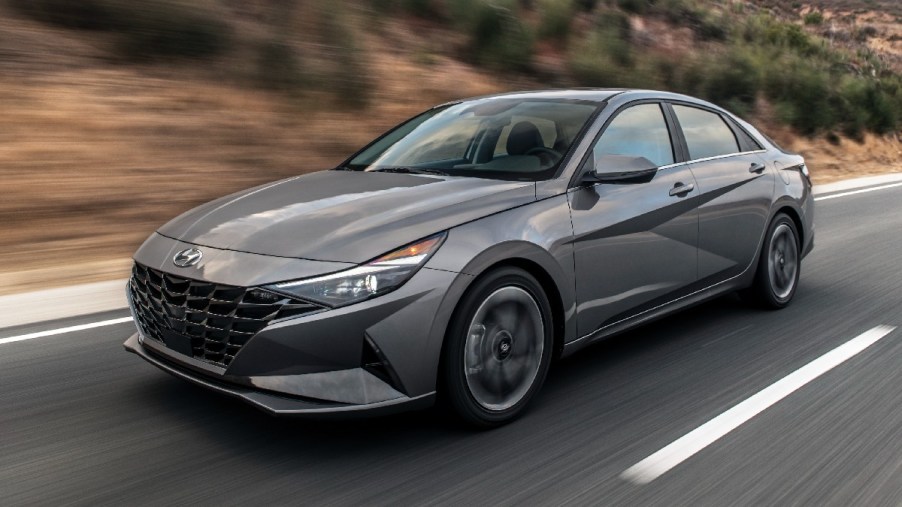
It’s Hard to Keep Track of How Many Advantages the Hyundai Elantra Has Over the Mitsubishi Mirage
These days, hybrid cars are the easiest way to put efficiency and convenience in the driveway. But there are several fuel-efficient non-hybrid cars on the market as well. Two of the most efficient are the Mitsubishi Mirage and Hyundai Elantra. But when looking at these two cars side-by-side, the competition ends at fuel economy as the Elantra easily outshines its competition.

Ranking the most-fuel efficient Hyundai and Mitsubishi models
On efficiency alone, the Mitsubishi Mirage has an edge over the Hyundai Elantra. In it’s most efficient sedan form, the Mirage is good for up to 43 mpg highway and 36 mpg in the city. Meanwhile, EPA estimates for the Elantra range up to 42 mpg highway and 33 mpg city.
While its advantage is slight, the Mirage does have fuel economy over the Hyundai, specifically in the city. As a cheap way to get around town, the Mitsubishi holds up, and is thousands less than the cheapest hybrid on the market right now. Unfortunately for Mitsubishi, its advantages end there.
More power in the Hyundai Elantra

In nearly every other way that matters, the Hyundai Elantra is a better option than the Mitsubishi Mirage. Sure, the Mirage is more efficient, but its 76-horsepower, three-cylinder engine pales in comparison to the base Elantra.
In the Hyundai, a 2.0-liter four-cylinder makes 147 horsepower, nearly twice that of the Mitsubishi. That’s impressive when you consider the similar efficiency of these two models. And with a zero to 60 mph time that is nearly three seconds faster, the Elantra is less of a liability on faster roads and highways.
The Mitsubishi Mirage and Hyundai Elantra are no match inside
On paper, interior space is no match between the Hyundai Elantra and Mitsubishi Mirage. For pure cargo space, the Mirage sedan offers 12.4 cubic feet compared to over 14 cubes in the Hyundai. But it isn’t just cargo space where the Hyundai wins out.
In fact, the passenger compartments of these two cars couldn’t be more different. Up front, the Hyundai offers 42.3 inches of legroom compared to just 41.7 inches in the Mirage. Headroom is more plentiful in the Elantra as well, measuring at 40.6 inches versus 38.9.
In the rear, there is even more difference between these two models. The Elantra offers rearseat riders 38 inches of legroom and 37.3 inches of headroom. Compare that to the Mirage, which offers 36.8 inches of headroom and 37.3 inches of leg space.
However, shoulder room shows the biggest difference between these two cars. At 56.5 inches in the Hyundai compared to just 51.7 inches in the Mitsubishi, passengers will find much more comfort in the Korean compact.
Cheap, efficient cars are hard to find
As much as it’s hard to find a cheap, efficient car these days, it’s equally difficult to recommend the Mitsubishi Mirage. For the price, a pre-owned Elantra, Corolla, or Forte is probably a better bet overall.
For new cars though, it’s one of only a few options below $20,000. But if you can build a hint of flexibility into the budget, the $21,000 Elantra is well worth it in comparison.




